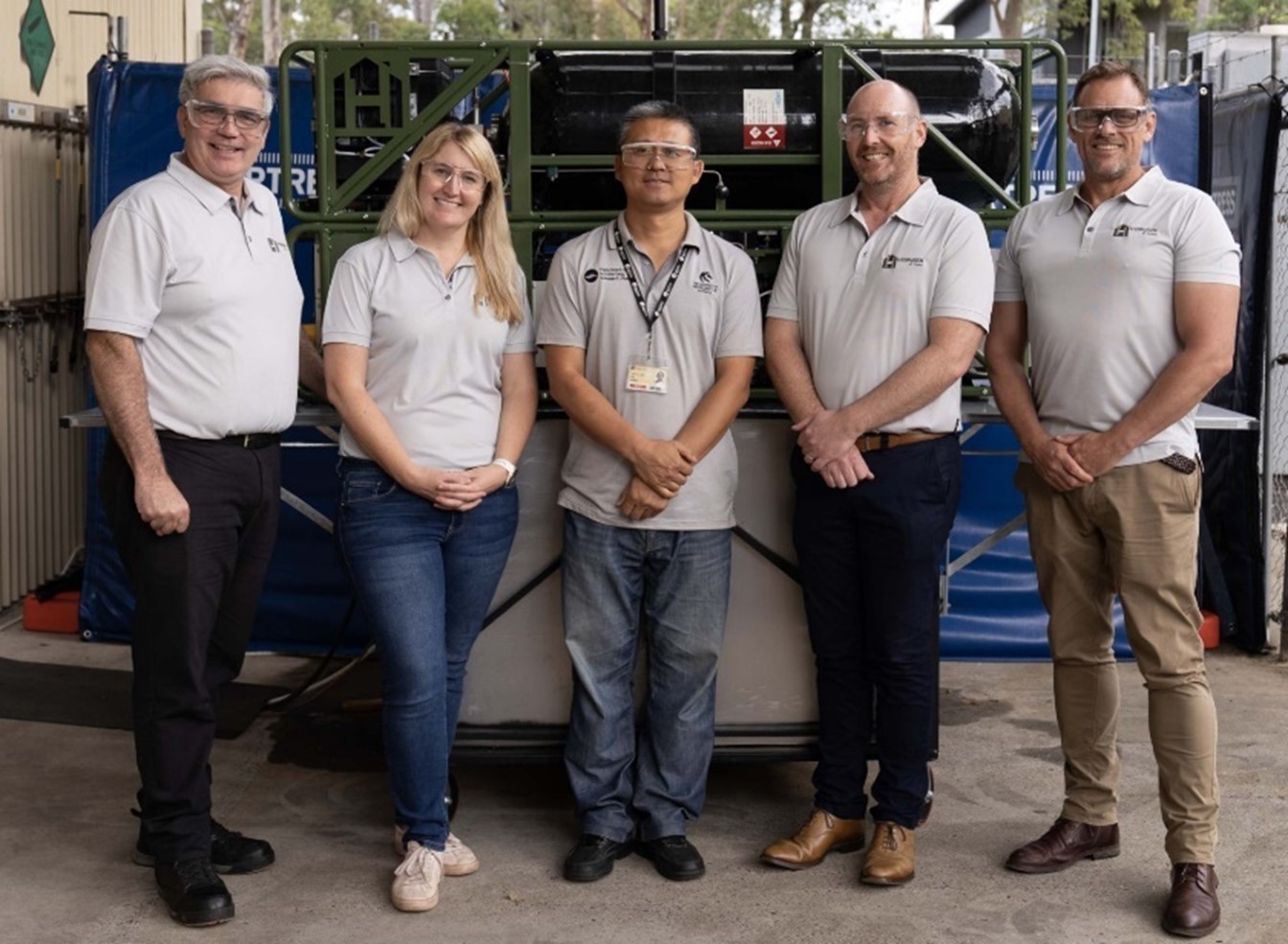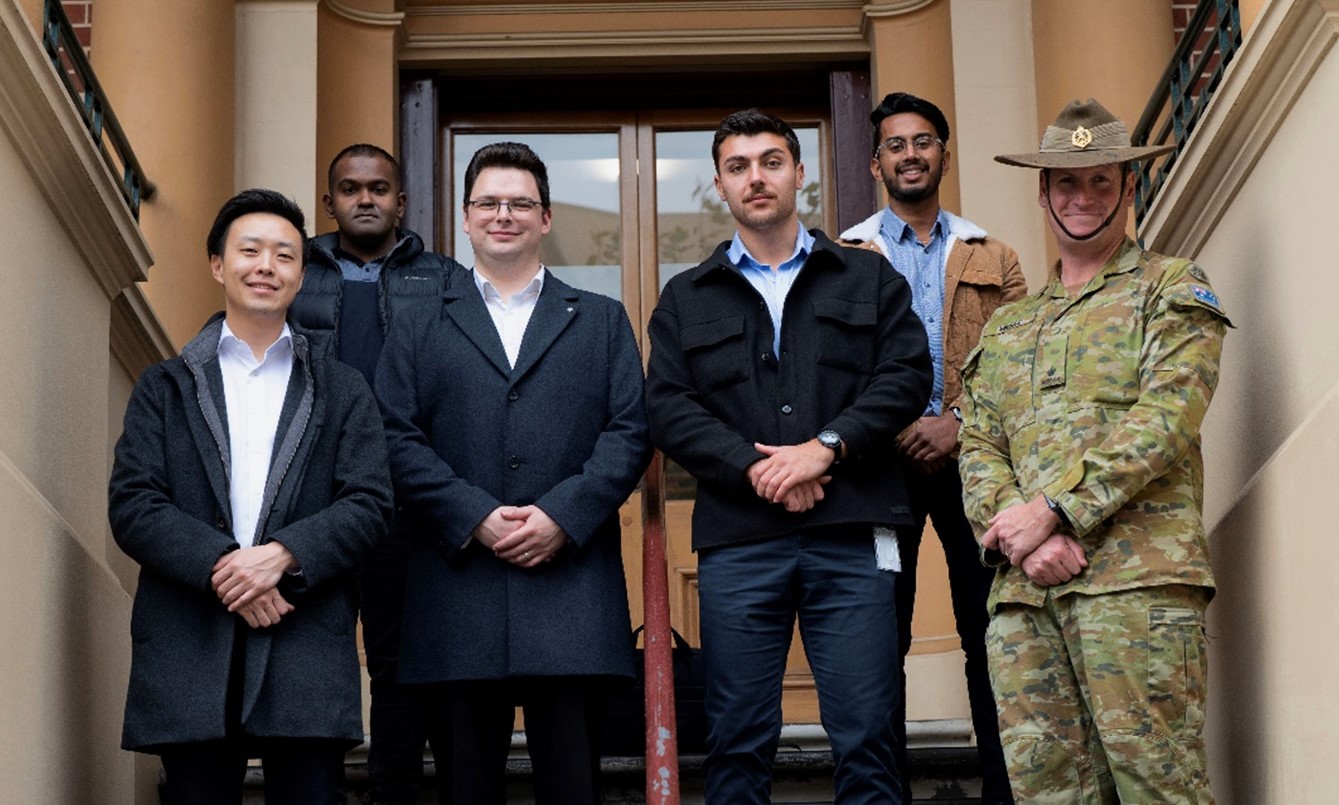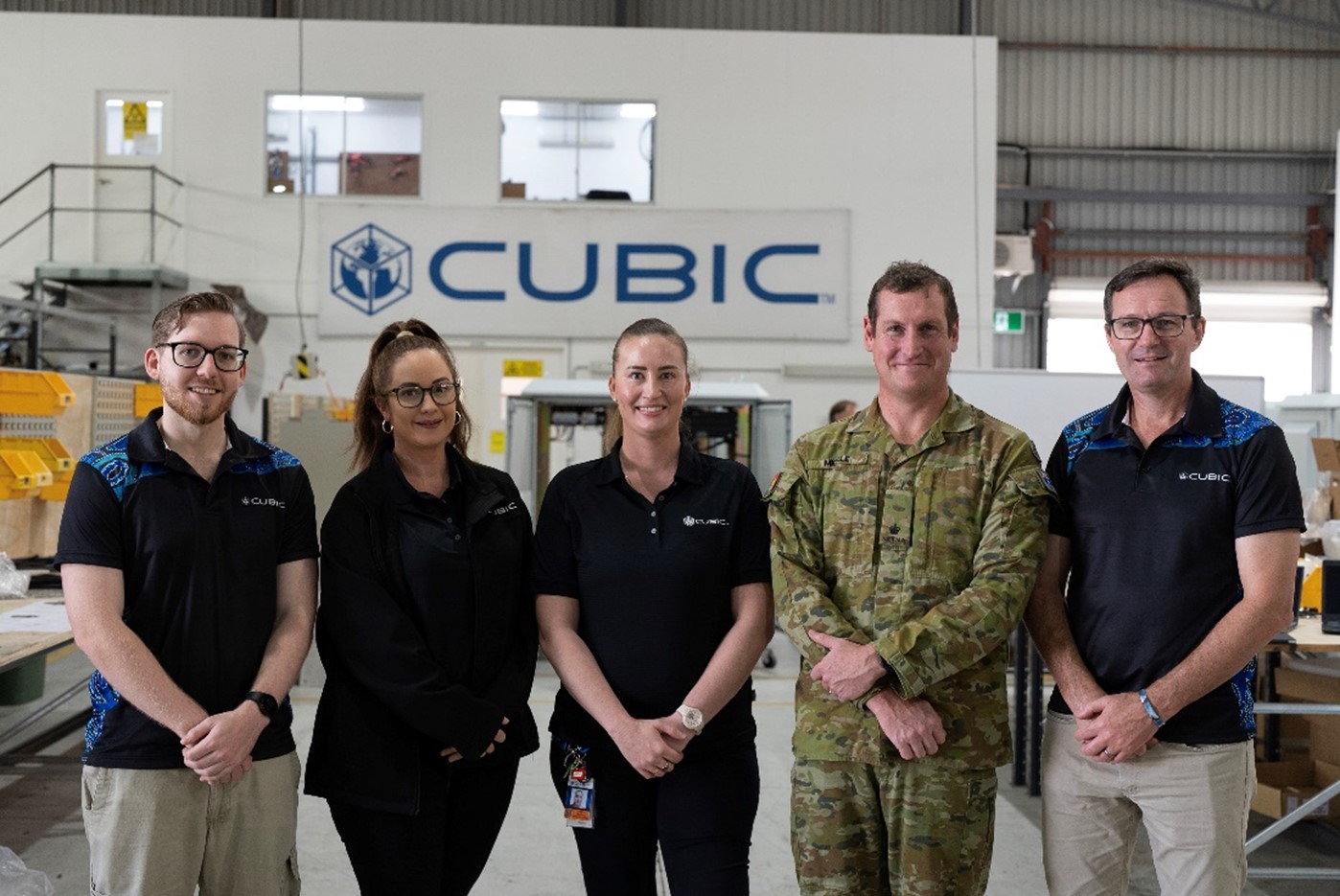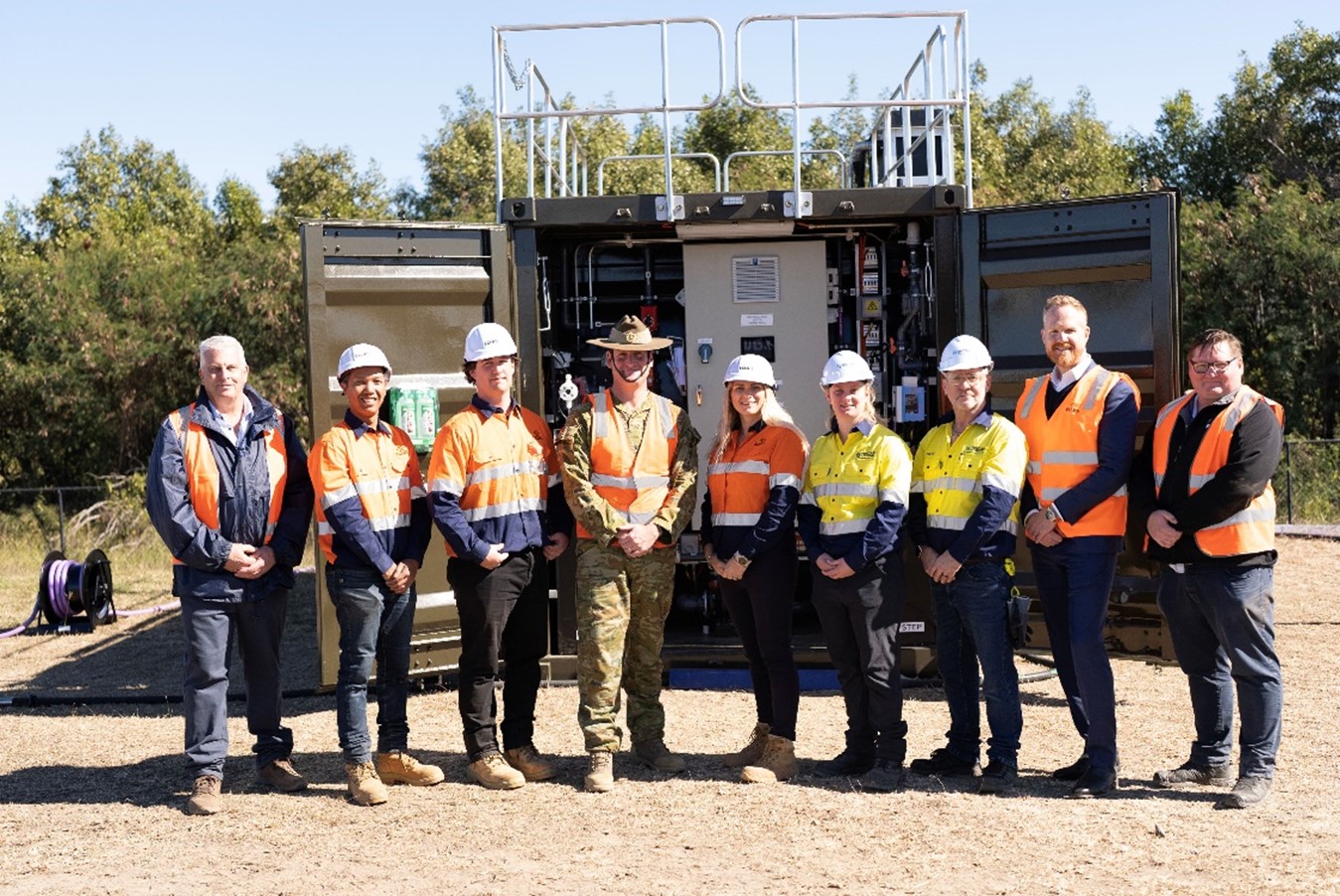Army Innovation Day delivers power through partnership
Army Innovation Day is delivering four cutting-edge power and energy projects through 18 months of research and development. These projects are a collaboration between Australian industry and academia and were initiated as part of the Army Innovation Day Challenge 2021.
Militaries across the world are rapidly moving towards the adoption of new technologies, characterised by advanced electronics and network systems, such as Robotic and Autonomous Systems. The reliance on, and demand for, energy is increasing as technology proliferates the modern battlespace and power becomes a critical resource.
Army understands how these changes present opportunities for enhanced capability advantage. While it is necessary to maintain performance, we need to be mindful that it’s not a simple matter of switching fossil fuels for renewables – it's about understanding and improving how Army meets future resource demand.
This demand requires Army to leverage technologies to improve the energy and environmental resilience of its deployed Land Force through improvements in power, energy, and environmentally responsible operations.
The challenge facing the future deployable Land Force is clear: it requires energy generation, management, storage, and distribution technologies to open new opportunities for deployable force infrastructure and platforms.
To meet the challenge, Army called on Australian sovereign industry and academia to propose innovative solutions to strengthen resource security, improve the efficiency of resource consumption, and modernise waste management.
Four companies, Hydrogen at Home, ecoJet Engineering, Eclips Logistics and CUBIC Defence, were selected at Army Innovation Day 2021 to further their proposed technologies in partnership with Army through the Defence Innovation Hub. Among the impressive innovations were a deployable hydrogen storage system, a cutting-edge microturbine, an innovative waste-to-energy treatment system, and an efficient waste disposal treatment system.
Hydrogen Energy Storage System - Hydrogen at Home

Newcastle-based company, Hydrogen at Home, delivered a prototype which can effectively produce and store hydrogen in a compact, lightweight and easily deployable way.
The Hydrogen Energy Storage System (HESS) prototype was developed by leading Australian chemical engineers, including Dr Jessica Allen.
“The idea is that the prototype can both produce hydrogen and then use it to create electricity,” Dr Allen explained.
The innovative technology presents several potential benefits to Army; including decreased reliance on diesel as the HESS uses water and solar energy to produce and store electricity. The HESS also delivers silent production of energy, providing Army a competitive edge in tactical environments.
“You need electricity for basically everything these days and everything is being electrified. Having a way to produce electricity on-site using a fuel you have also made is a major advantage,” said Dr Allen.
Company founder Jeffery Lyons previously served in the Australian Army as a Cavalryman in 1 Brigade. He leveraged his experience to design a system to suit Army’s needs.
“Hydrogen in the Army was an immediately obvious solution. I could see some synergies with Army’s current capabilities and future needs, with Hydrogen filling those needs,” he explained.
“By using water as a raw material, you can produce a fuel like hydrogen in a footprint that fits on a small truck. In terms of energy resilience, sovereign capability and Army’s ability to control its supply chain and provide energy in a tactical environment, that’s a big leap forward.”
Hydrogen at Home enjoyed the Army Innovation journey so much that they bid, and have been selected, to attend Army Innovation Day in 2023, where they will demonstrate a counter-RAS system powered by hydrogen fuel.
Micro Turbine – ecoJet Engineering
In Adelaide, the innovative team at ecoJet Engineering designed a micro turbine that can provide 3-5KW of sustained electrical energy - enough to power the average Australian household during peak periods, in a compact size.

The micro turbine is fundamentally a compact jet engine that has been designed to generate energy instead of thrust. It has the versatility to be fuelled by a variety of sources, such as hydrogen.
Micro turbines offer a variety of potential benefits to Army, including the ability to generate and provide energy at the point of need.
“There is an ever-growing list of devices that require power, from large systems to small systems. The way that we currently provide that power is through large and relatively immobile power production units. Having smaller, more agile, more efficient tech with higher output energy generation makes soldiers less vulnerable in the field,” Major Josh Mickle said.
Director of ecoJet Engineering, James Kim, is confident that micro turbines can offer power to the point of need in operating environments.
“In the field, [3-5kw] might be sufficient for powering a small deployable command post,” he said.
As part of ecoJet Engineering’s Army Innovation Day 2021 submission, the team are also designing a scalable system to ensure the ever-growing demand for power can be met.
“Our system has been designed to have multiple units stacked together, so you can easily scale from 3-5, up to 27-45kw of power on demand,” Mr Kim said.
The partnership with ecoJet Engineering has affirmed Army’s interest of the applications and potential benefits associated with micro turbines. Army remains interested in potential integration opportunities with clean fuel sources.
Waste to energy system - CUBIC Defence

CUBIC Defence have delivered a waste-to-energy system prototype that turns kitchen waste, medical waste, and sewage into usable energy through a microwave-assisted pyrolysis process.
“Microwave assisted pyrolysis is a technique for conversion of hydrocarbon waste. When we do that chemical conversion we get three things: biochar, oil that is burnable in a diesel engine, and a gas that’s burnable to produce energy,” said Mark Horn, Director of Strategic Development Oceania at CUBIC Defence.
Waste management is an important consideration for Defence as environmentally responsible operations become vital and the need for power proliferates. Currently, waste is often removed by external contractors or via sea vessels which transport the waste to landfill.
CUBIC Defence’s prototype provides the benefits of microwave-assisted pyrolysis in a deployable land combat system.
“This is really important to the Land Force in that we often deploy to austere environments and have to be as efficient as possible to win resources, dispose of waste and think cleverly about how we maintain and store power,” said Major Mickle.
CUBIC Defence demonstrated their prototype by using virtual reality at the 2021 Army Innovation Day. Since then, they have demonstrated that waste-to-energy systems could be a reality as Defence transitions to clean energy production and looks to decrease environmental impact.
Deployable Waste Treatment Plant - Eclips Logistics

Eclips Logistics have delivered a way to break down raw sewerage for easy disposal in a deployable system that can withstand austere environments.
To deliver the project in 18-months, Eclips Logistics collaborated with TriStar to repackage a Commercial Modular Sequencing Batch Reactor (SBR) Waste Treatment Plant and applied their expertise as veterans to ensure the system is easily deployable and maintained.
“By repacking this modular waste system into a six-meter container from a 12-meter container it allows Defence to remove and control the disposal of the waste themselves,” said Samantha Aitken, Project Manager, Eclips Logistics.
Exploring alternative options for human-waste disposal not only increases efficiencies, but the self-sufficient approach also decreases security risks to better protect the force.
“There were several security breaches out on operations where, on a few occasions, explosive devices had been hidden in sewerage trucks,” she explained.
The system can dispose of up to 5,000 litres of waste per-day, which is equivalent to around 50 people. Another benefit of the system is the ability for the technology to scale, disposing up to 7,500 litres per day.
The project has demonstrated the benefit of looking to other industries to understand what technology is available, while working with industry to incorporate the military requirements.


